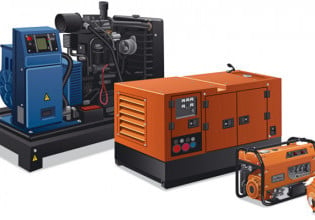Rethinking Electric Truck Design
Electric trucks are well on their way as part of the electric vehicle industry, but their design requires different considerations than traditional electric passenger vehicles.
Although electric trucks are on their way, they require different design considerations than electric passenger cars or buses.

Image used courtesy of Qnovo
A heavy truck (like a Class 8) has a gross weight above 15 metric tons and is used for hauling heavy freight. Semi-trucks are among the most common in this category. In the United States, between 2020 to 2023, annual sales reached approximately 250,000 vehicles divided among major names such as Daimler Trucks, Volvo Trucks, and Paccar. Freightliner is a division of Daimler, and Peterbilt and Mack are brands of Paccar.
The trend toward electrification of heavy trucks received much attention as Tesla publicized its Semi, though all major manufacturers have initiatives. Approximately 2,000 electric heavy trucks were sold in 2022 – a small part of the total market that highlights the opportunity for future electrification.
Design Requirements for Electric Trucks
A heavy truck's use case is vastly different from that of a passenger vehicle. Consequently, the requirements of the electric powertrain, including the battery system, are very different.
Whereas a passenger vehicle may be used for only a few hours each day, a heavy commercial vehicle operates for 16 to 22 hours, 350 days a year, under some extreme conditions ranging from -30 ℃ to + 50 ℃ and intense road vibrations. Towing a load requires high torques on the motors resulting in high current loads on the battery. An electric truck battery may undergo two to three daily charge cycles and fast charge once or twice a day.
Battery Design Constraints
Such operating conditions place significant constraints on the battery design. Owing to its heavy weight, the powertrain's efficiency is typically between 1 and 2 kWh per mile – about 2-3X that of a passenger car – which dictates the battery size for a given driving distance. The Tesla Semi has a battery capacity of up to 875 kWh for 500 miles (800 km). The Volvo VNR Electric series battery is a little smaller at 565 kWh, boasting a range of about 275 miles (450 km). Naturally, the actual driving distance depends on road conditions and overall weight of the loaded vehicle. Power is another key specification. Typically, three electric motors provide a total power output between 300 and 500 kW (approximately 450 to 650 hp) – on par with its combustion-engine counterpart.
By comparison, the battery size of an electric sedan is closer to 75 kWh, a small fraction of the battery in a heavy truck. Truck batteries are assembled as super packs, i.e., connecting 4 to 6 battery packs in parallel, with each pack providing about 100 kWh operating at 400 V (think of 6 Tesla Model S working in tandem). Simple calculations indicate that the motors may be drawing over 1,000 A from the battery at peak power.
The packs are assembled from individual lithium-ion battery cells sourced from suppliers such as LG Energy Solution, Samsung SDI, or Panasonic. Tesla historically used cylindrical cells from Panasonic.
Cell naming conventions often lack creativity. Called 2170 or 4680, they refer to the diameter and height of the cylinder (e.g., 21 mm x 70 mm). A 2170 cell has a typical charge capacity of about 5 Ah, whereas the 4680 offers about 9 Ah. To convert from charge capacity (Ah) to energy (Wh), multiply the charge capacity by the nominal voltage of 3.8 V. Hence, a 100-kWh battery will be made by electrically assembling some 5,200 individual 2170-cells, or 2,900 4680-cells into one large battery pack.
The cells are connected in a single pack in a hybrid configuration of series and parallel electrical connections. The series connection adds up the voltages from 96 series elements to reach a voltage of nearly 400 V. Newer pack architectures stack 192 cells in series to reach a pack voltage of 800 V. Each series element consists of several cells (15 ~ 30) connected electrically in parallel.
Mechanically, these cells are mounted on cooling plates for temperature control within a heavy steel enclosure that provides additional mechanical and vibration protection. Each pack weighs 500 to 600 kg (1,100 to 1,300 lb) – a truck battery with six packs will weigh nearly 8,000 lbs.
With increased pack complexity, the battery management system (BMS) and software play a critical role and must scale correspondingly. Each pack normally has its dedicated BMS tasked with monitoring and diagnostic functions. But in a heavy truck, an additional BMS unit sits on the six packs in parallel to manage their smooth operation.
Charging Considerations
The truck’s up-time is critical, so DC fast charging is important. Charging times vary between 45 and 90 minutes. Volvo Trucks specifies 60 to 90 minutes at 250 kW of charging power. Tesla’s Semi charges faster using 500 kW Tesla charging stations. The advent of bigger charging stations delivering 750 to 1,000 kW of power promises to bring the charging time to under 30 minutes – sufficient to charge the truck during scheduled driver breaks.
Regenerative braking (or regen) is another key consideration for battery charging – regen is when the motor runs in reverse to slow down the vehicle (e.g., driving downhill), thus becoming a generator of electricity and storing it back into the battery. A 30-ton truck descending the Grapevines outside of Los Angeles (about 4,000 feet elevation drop) may add 100 kWh of energy back into the battery. Consequently, the BMS may reserve 10% to 15% battery capacity as a buffer for energy received during regenerative braking, illustrating how route planning differs between electric and combustion-engine trucks.
Next time you see a Class-8 electric truck, turn down your radio and listen to how quiet it drives. It will also improve air quality as diesel fumes are eliminated.






